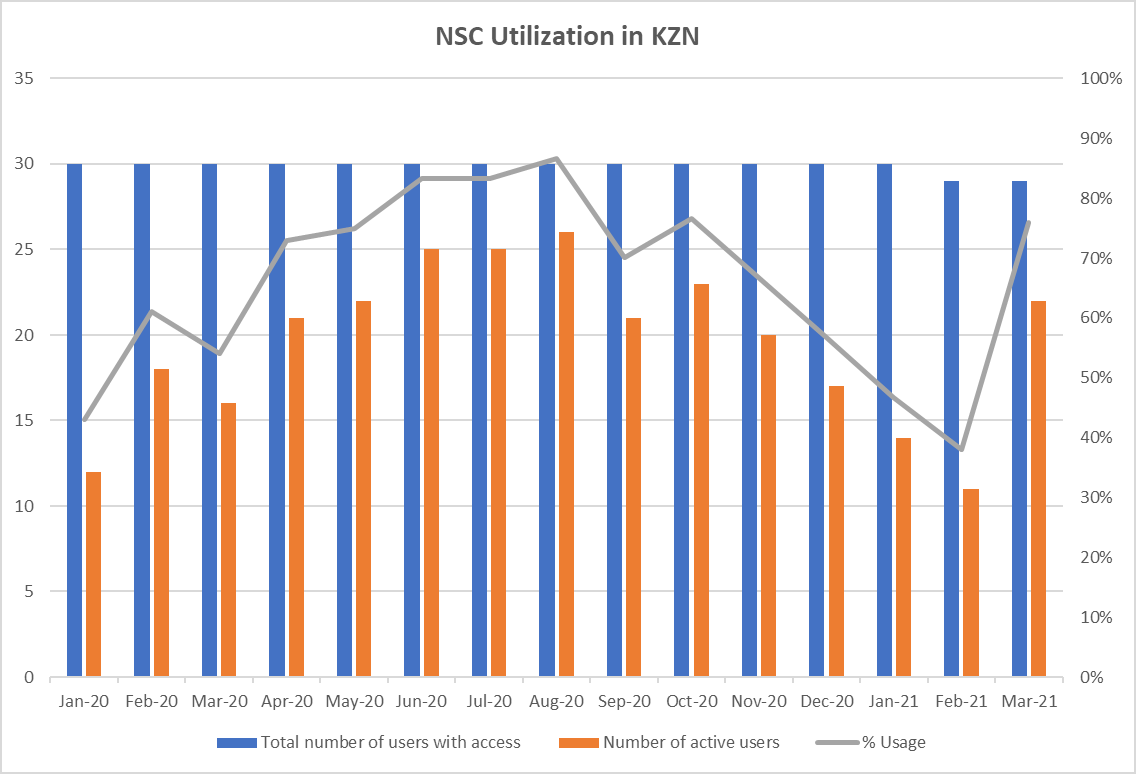
Across the South African public health sector, advances in information technology are playing an increasing role in meeting patient needs, reducing operational costs, and improving efficiency. In the public health supply chain space, the increased use of systems like the National Surveillance Center (NSC)1 has resulted in marked progress in enabling health workers to practice evidence-based decision making when it comes to managing the availability and use of medicines.
The NSC makes various dashboards and reports available electronically via a web-based reporting platform. The NSC is accessible to registered license holders with an internet connection and computer or smart device from any geolocation. The NSC is used routinely to monitor stock availability at hospitals, community health centers and clinics. It can be used as a risk management tool by flagging facilities with low stock levels to mitigate the risk of medicine stock outs. For the NSC to yield optimal benefit, however, licensed users must regularly access and review the NSC data and use it to make evidence-based decisions and trigger the necessary actions.
In KwaZulu-Natal (KZN) province, NSC licenses were initially issued to 28 users, 18 of whom received training in April 2019 through the support of the United States Agency for International Development (USAID)-funded Global Health Supply Chain Program – Technical Assistance (GHSC-TA). Currently, there are 30 NSC users in KZN, including district and provincial pharmacy managers, pharmaceutical support services officers, and senior managers all of whom have been equipped to use the system.
Since January 2020, the member of the GHSCTA Provincial Support Team (PST) designated to support KZN, assisted NSC users throughout the province to access and use the information available on the platform to make better decisions related to medicine availability. Through routine extraction of data from the NSC, including reports showing NSC user accessibility patterns for the 30 license holders, NSC users are now able to follow an evidence-based approach when managing the supply of medicines and monitoring medicine availability. Part of the routine process includes regularly sharing reports with the relevant stakeholders, including those who themselves do not have direct access to the NSC. This information is shared monthly, hence playing a critical role in connecting the broader stakeholder group to this valuable information.
In addition to these reports, the PST developed and distributed user-friendly job aids to guide NSC users in easily retrieving the medicine availability data they need. These tools present a step-by-step guide on how users can navigate the NSC to access relevant information.

The beauty of the NSC is that one can track the trends and identify challenges in utilization of the platform. In KZN, the NSC usage rates for the licensed and active users (NSC users that accessed within the month) were recorded at 43 percent in January 2020, 61 percent in February 2020, and 54 percent in March 2020. Usage rates of active users increased to 75 percent and 79 percent during May and July 2020 through continued support and communication from the PST.
Statistics from the NSC show that the overall use of the NSC, since the PST began engaging actively with licensed users, increased by 34 percent between January and November 2020. Despite this good progress, NSC usage decreased in November (66.6%) and December (56.7%) and declined further until February 2021. The trend is attributed to numerous issues including challenges with the server, public holidays, and work around the Covid-19 vaccine rollout. Visibility of NSC usage, however, enabled the PST to identify challenges, undertake root cause analysis and take proactive steps to address issues in real time. By the end of March 2021 usage had again increased to 76%.
Through consistent NSC user engagement, support, and mentorship, between the PST and licensed users, optimal use, and true institutionalization of the NSC has been achieved. With ongoing use and an in-depth understanding of the information on the NSC dashboards, users are gaining the inherent knowledge and skills needed to not only effectively manage the medicine supply chain in a cost effective and rational manner, but to understand utilization trends within the province. In addition, usage trends can be flagged and addressed.